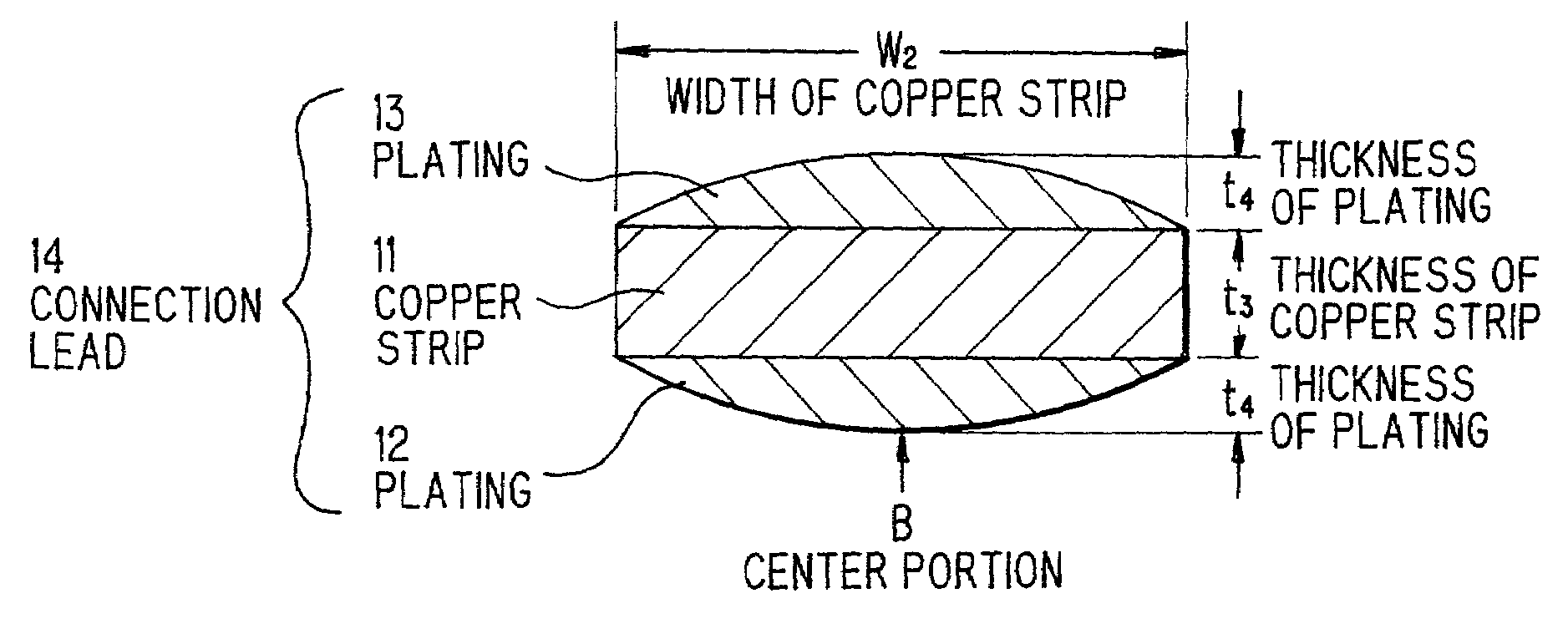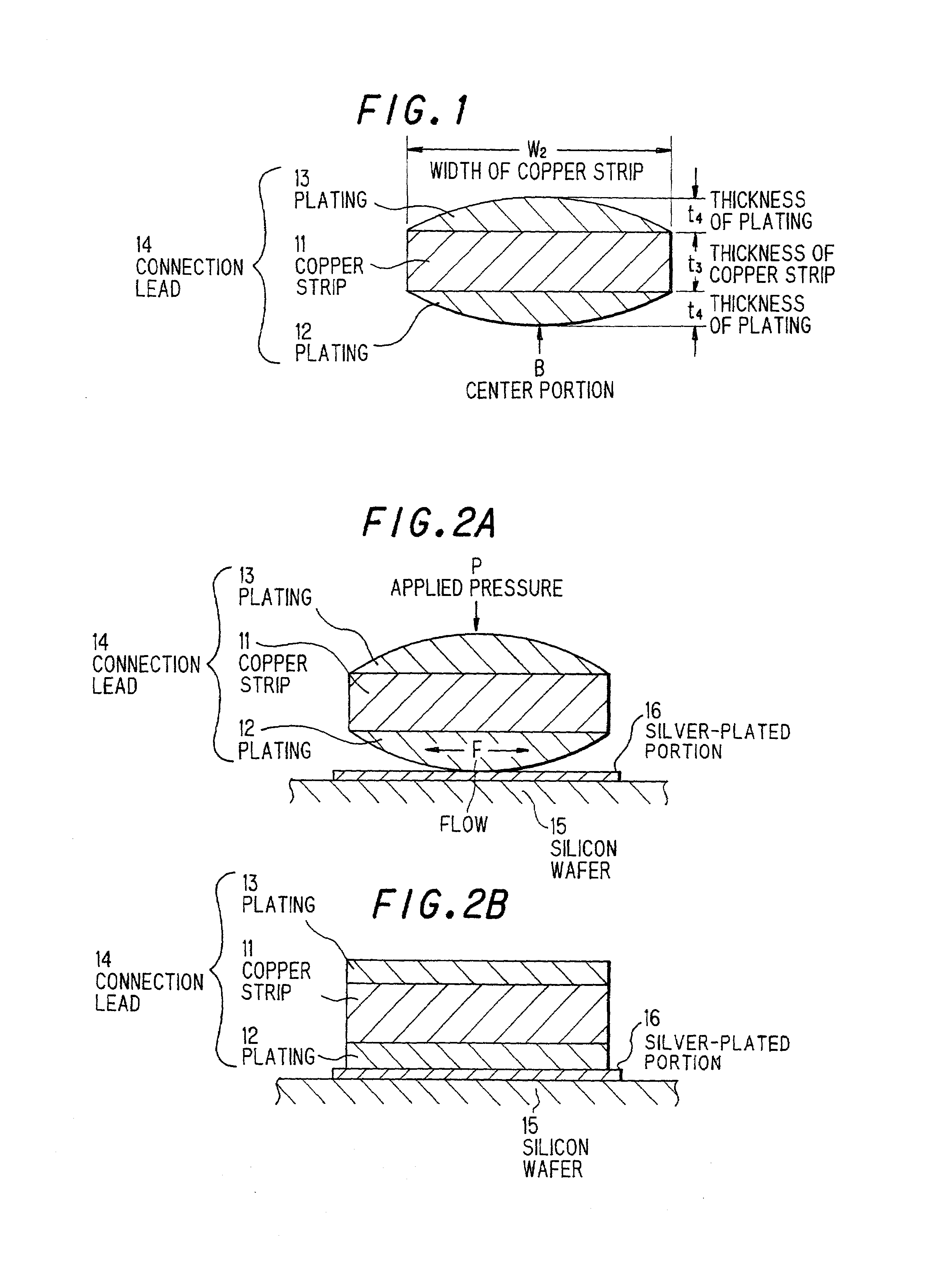Lead-free solder, and connection lead and electrical component using said lead-free solder
- Summary
- Abstract
- Description
- Claims
- Application Information
AI Technical Summary
Benefits of technology
Problems solved by technology
Method used
Image
Examples
Embodiment Construction
[0050]Preferred embodiments of the invention will be explained in conjunction with the accompanying drawings.
[0051]FIG. 1 shows a preferred embodiment of the connection lead according to the invention. In the drawing, numeral 14 designates a connection lead, numeral 11 a copper strip, and numerals 12 and 13 platings, formed of the lead-free solder according to the invention, provided respectively on both sides of the copper strip 11. In this case, each of the platings is in an arc sectional form such that the apex is located at the center portion B in the widthwise direction of the copper strip 11.
[0052]FIG. 2 is a diagram showing a construction wherein the connection lead 14 shown in FIG. 1 has been applied to a lead connection structure in a solar battery of the same type as shown in FIG. 6. As is demonstrated in the experimental results below, the lead-free solder, according to the invention, constituting the plating 12 is less likely to form an oxide layer and can be connected, ...
PUM
| Property | Measurement | Unit |
|---|---|---|
| Percent by mass | aaaaa | aaaaa |
| Percent by mass | aaaaa | aaaaa |
| Percent by mass | aaaaa | aaaaa |
Abstract
Description
Claims
Application Information
 Login to View More
Login to View More - R&D
- Intellectual Property
- Life Sciences
- Materials
- Tech Scout
- Unparalleled Data Quality
- Higher Quality Content
- 60% Fewer Hallucinations
Browse by: Latest US Patents, China's latest patents, Technical Efficacy Thesaurus, Application Domain, Technology Topic, Popular Technical Reports.
© 2025 PatSnap. All rights reserved.Legal|Privacy policy|Modern Slavery Act Transparency Statement|Sitemap|About US| Contact US: help@patsnap.com



